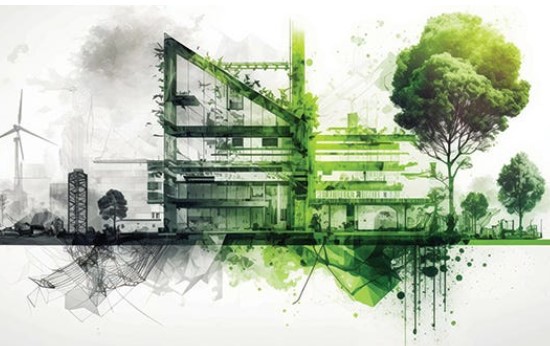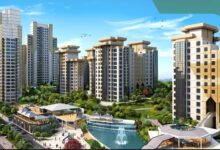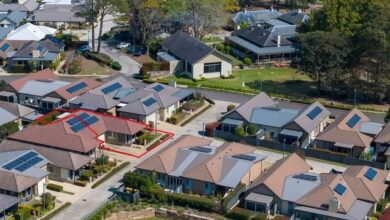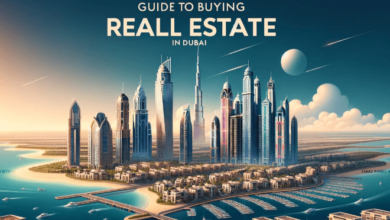Exploring Sustainable Real Estate Developments

Introduction
Sustainable real estate development is an evolving field that seeks to balance environmental responsibility, social equity, and economic viability in building and managing properties. As the world grapples with the consequences of climate change, the real estate sector is increasingly turning towards sustainable practices to mitigate environmental impact, enhance community well-being, and ensure long-term economic gains. This comprehensive guide delves into the multifaceted aspects of sustainable real estate, offering insights into its principles, benefits, challenges, and future trends.
What is Sustainable Real Estate Development?
Sustainable real estate development refers to the practice of designing, constructing, and managing buildings and communities in ways that reduce environmental impact, promote social well-being, and ensure economic viability. This holistic approach goes beyond mere energy efficiency to encompass a broad range of practices aimed at creating sustainable urban environments.
Definition and Importance
At its core, sustainable real estate development focuses on minimizing resource consumption and waste, optimizing energy use, and creating healthy living and working spaces. Its importance lies in its potential to address key global challenges such as climate change, resource depletion, and social inequity, making it a vital aspect of modern urban planning.
Historical Context
The concept of sustainability in real estate has evolved over the past few decades, gaining significant momentum in the late 20th century with the rise of the environmental movement. Early efforts focused on energy efficiency and waste reduction, gradually expanding to include broader social and economic considerations. Today, sustainable real estate is a critical component of global sustainability agendas.
Key Principles of Sustainable Real Estate
Sustainable real estate development is guided by several core principles that ensure a balanced approach to building and managing properties.
Environmental Responsibility
Environmental responsibility involves reducing the environmental impact of buildings through energy efficiency, renewable energy use, waste reduction, and the preservation of natural habitats. This principle aims to create developments that are in harmony with the natural environment.
Social Equity
Social equity ensures that sustainable real estate development benefits all community members, providing access to affordable housing, healthy living conditions, and inclusive public spaces. It emphasizes the need for developments to contribute positively to the social fabric of communities.
Economic Viability
Economic viability focuses on the long-term financial benefits of sustainable development. This includes reducing operational costs, increasing property values, and attracting investment. Sustainable real estate must be financially feasible to ensure its widespread adoption and success.
Environmental Benefits of Sustainable Developments
Sustainable real estate developments offer numerous environmental benefits, making them essential in the fight against climate change and environmental degradation.
Reduced Carbon Footprint
One of the primary goals of sustainable development is to reduce the carbon footprint of buildings. This is achieved through energy-efficient designs, renewable energy sources, and sustainable building materials, all of which contribute to lower greenhouse gas emissions.
Energy Efficiency
Energy efficiency is a cornerstone of sustainable real estate. Buildings are designed to use less energy for heating, cooling, lighting, and appliances. This is accomplished through better insulation, energy-efficient windows, and smart building technologies that optimize energy use.
Biodiversity Preservation
Sustainable developments often include measures to preserve and enhance local biodiversity. This can involve maintaining natural landscapes, planting native species, and creating green roofs and walls that support wildlife. Such practices help protect ecosystems and improve urban biodiversity.
Economic Advantages of Sustainable Real Estate
Sustainable real estate development is not only beneficial for the environment but also offers significant economic advantages.
Cost Savings
Energy-efficient buildings reduce utility costs for owners and tenants. Over time, the savings on energy bills can offset the initial investment in sustainable technologies and materials, making sustainable buildings more economical in the long run.
Increased Property Value
Properties with sustainable features often command higher market values. Buyers and tenants are increasingly willing to pay a premium for buildings that offer lower operating costs and healthier living environments. This makes sustainable real estate an attractive investment.
Long-term Investment Benefits
Sustainable real estate is a sound long-term investment. As regulations and market demands increasingly favor sustainability, properties that meet these criteria are likely to appreciate in value and remain competitive in the market.
Social Impact of Sustainable Real Estate
Beyond environmental and economic benefits, sustainable real estate developments have a profound social impact.
Community Well-being
Sustainable developments foster community well-being by creating healthier living environments, reducing pollution, and providing access to green spaces. These factors contribute to higher quality of life and stronger community ties.
Health Benefits
Buildings designed with sustainability in mind often promote better health for their occupants. Improved indoor air quality, natural lighting, and the use of non-toxic materials reduce the risk of respiratory problems, allergies, and other health issues.
Social Inclusion
Sustainable real estate developments aim to be inclusive, providing affordable housing options and accessible public spaces. This helps create diverse, vibrant communities where people of different backgrounds and income levels can thrive.
Green Building Standards and Certifications
Green building standards and certifications play a crucial role in promoting and verifying the sustainability of real estate developments.
LEED
The Leadership in Energy and Environmental Design (LEED) certification is one of the most widely recognized green building standards. It provides a framework for healthy, highly efficient, and cost-saving green buildings, covering aspects like energy use, water efficiency, and indoor environmental quality.
BREEAM
The Building Research Establishment Environmental Assessment Method (BREEAM) is another prominent green building certification. It assesses buildings against a range of sustainability criteria, including energy, health, and well-being, innovation, and land use.
Energy Star
Energy Star is a certification focused on energy efficiency. It is awarded to buildings that meet strict energy performance standards, helping property owners and managers reduce energy use and save on operating costs.
Innovative Sustainable Building Technologies
Technological advancements are driving the development of more sustainable real estate solutions.
Renewable Energy Systems
Incorporating renewable energy systems, such as solar panels and wind turbines, into building designs reduces reliance on fossil fuels and lowers greenhouse gas emissions. These systems can provide a significant portion of a building’s energy needs.
Smart Building Technologies
Smart building technologies use sensors and automation to optimize building performance, enhancing energy efficiency and occupant comfort. Examples include automated lighting systems, smart thermostats, and advanced security systems.
Sustainable Materials
Using sustainable building materials, such as recycled steel, bamboo, and reclaimed wood, reduces the environmental impact of construction. These materials are often more durable and require less energy to produce than traditional building materials.
Case Studies of Successful Sustainable Developments
Examining successful sustainable real estate developments can provide valuable insights and inspiration.
Examples from Around the World
Notable examples of sustainable developments include the Bullitt Center in Seattle, known as the greenest commercial building in the world, and the One Central Park in Sydney, which features vertical gardens and integrated renewable energy systems.
Key Success Factors
Successful sustainable developments typically share common factors such as strong leadership, community involvement, innovative design, and a commitment to continuous improvement. These elements contribute to their long-term success and replicability.
Challenges in Sustainable Real Estate Development
Despite its benefits, sustainable real estate development faces several challenges.
Financial Barriers
The initial cost of sustainable building technologies and materials can be high, deterring some developers. However, long-term savings and financial incentives can help offset these costs.
Regulatory Hurdles
Navigating complex regulatory environments can be challenging for sustainable real estate projects. Building codes and zoning laws may not always support innovative sustainable practices, requiring developers to seek variances or lobby for changes.
Technological Challenges
While technology is advancing rapidly, integrating new technologies into building designs can be complex. Ensuring compatibility and optimizing performance requires careful planning and expertise.
Sustainable Urban Planning
Urban planning plays a critical role in the development of sustainable communities.
Mixed-use Developments
Mixed-use developments combine residential, commercial, and recreational spaces in one area, reducing the need for transportation and promoting a vibrant community life. These developments support sustainability by encouraging walking, cycling, and public transport use.
Public Transportation
Integrating public transportation into urban planning reduces the reliance on personal vehicles, lowering carbon emissions and traffic congestion. Sustainable developments often include easy access to public transit options.
Green Spaces
Incorporating green spaces such as parks, gardens, and green roofs into urban environments enhances biodiversity, reduces heat island effects, and provides recreational opportunities for residents.
Future Trends in Sustainable Real Estate
The future of sustainable real estate is shaped by emerging trends and evolving market demands.
Emerging Technologies
Advancements in technology, such as artificial intelligence and the Internet of Things (IoT), are set to revolutionize sustainable real estate. These technologies enable smarter, more efficient building management and design.
Policy Changes
Governments around the world are implementing stricter regulations and incentives to promote sustainable building practices. These policy changes will drive greater adoption of sustainable real estate development.
Market Demand
As awareness of environmental issues grows, so does the demand for sustainable properties. Consumers are increasingly seeking out eco-friendly homes and workplaces, pushing developers to prioritize sustainability.
Role of Government in Promoting Sustainable Real Estate
Government support is crucial in advancing sustainable real estate practices.
Incentives and Subsidies
Governments can encourage sustainable development through financial incentives such as tax breaks, grants, and subsidies. These incentives help offset the initial costs of sustainable technologies and materials.
Regulations and Standards
Implementing and enforcing regulations and standards for sustainable building practices ensures that all new developments meet minimum sustainability criteria. This can include building codes, energy efficiency standards, and environmental impact assessments.
Public-Private Partnerships
Collaborations between government entities and private developers can drive sustainable real estate projects. These partnerships can provide the necessary funding, expertise, and resources to overcome barriers to sustainable development.
Sustainable Real Estate Investment
Investing in sustainable real estate offers financial returns and positive environmental and social impacts.
Green Bonds
Green bonds are a popular investment vehicle for funding sustainable real estate projects. These bonds finance projects that provide environmental benefits, such as energy-efficient buildings and renewable energy installations.
ESG Investing
Environmental, Social, and Governance (ESG) investing considers the environmental and social impact of investments. ESG criteria are increasingly being used to evaluate real estate investments, promoting sustainability in the sector.
Impact Investing
Impact investing aims to generate positive, measurable social and environmental impact alongside financial returns. Sustainable real estate developments are prime candidates for impact investments due to their potential to deliver significant benefits.
The Role of Architects and Engineers in Sustainability
Architects and engineers are at the forefront of designing and implementing sustainable real estate solutions.
Design Innovations
Architects are exploring innovative design concepts that enhance sustainability, such as passive solar design, green roofs, and biophilic design. These concepts aim to create buildings that are energy-efficient and in harmony with nature.
Engineering Solutions
Engineers play a critical role in developing and implementing technologies that support sustainable buildings. This includes renewable energy systems, water conservation technologies, and advanced building materials.
Collaborative Approaches
Collaboration between architects, engineers, and other stakeholders is essential for successful sustainable real estate projects. Interdisciplinary teams can develop comprehensive solutions that address environmental, social, and economic goals.
Community Involvement in Sustainable Development
Engaging the community is vital for the success of sustainable real estate projects.
Stakeholder Engagement
Involving stakeholders, including residents, businesses, and local authorities, in the planning process ensures that developments meet the needs and preferences of the community. This engagement fosters support and collaboration.
Participatory Planning
Participatory planning involves the community in decision-making processes, allowing them to contribute ideas and feedback. This approach leads to more inclusive and acceptable outcomes.
Community-led Initiatives
Supporting community-led initiatives, such as urban gardens and renewable energy cooperatives, empowers residents to take an active role in sustainability. These initiatives can complement larger sustainable development projects.
Sustainability in Residential Real Estate
Residential real estate is a key area for sustainable development efforts.
Eco-friendly Homes
Eco-friendly homes incorporate energy-efficient designs, renewable energy systems, and sustainable materials. These homes reduce environmental impact and provide healthier living environments for residents.
Green Neighborhoods
Green neighborhoods are designed to promote sustainability at the community level. They include features such as shared green spaces, community gardens, and easy access to public transportation and local amenities.
Sustainable Housing Initiatives
Sustainable housing initiatives aim to provide affordable, energy-efficient homes for low-income families. These initiatives address social equity and environmental sustainability simultaneously.
Sustainability in Commercial Real Estate
Commercial real estate also plays a significant role in advancing sustainability.
Green Offices
Green offices are designed to reduce energy consumption, improve indoor air quality, and enhance employee well-being. Features include energy-efficient lighting, ventilation systems, and access to natural light.
Sustainable Retail Spaces
Sustainable retail spaces prioritize energy efficiency and waste reduction. This includes using energy-efficient lighting and appliances, implementing recycling programs, and sourcing sustainable products.
Eco-friendly Industrial Buildings
Industrial buildings can be made more sustainable through energy-efficient designs, renewable energy systems, and sustainable materials. This reduces their environmental impact and operational costs.
Measuring Sustainability in Real Estate
Measuring sustainability in real estate is essential for tracking progress and identifying areas for improvement.
Key Performance Indicators
Key performance indicators (KPIs) for sustainability include energy use, water consumption, waste generation, and greenhouse gas emissions. These metrics provide a clear picture of a building’s environmental performance.
Sustainability Reporting
Sustainability reporting involves documenting and communicating a building’s sustainability performance. This transparency helps stakeholders understand the impact of their investments and operations.
Benchmarking
Benchmarking involves comparing a building’s performance against industry standards or similar buildings. This process identifies best practices and areas for improvement, driving continuous progress in sustainability.
Sustainable Landscaping and Outdoor Spaces
Outdoor spaces are an integral part of sustainable real estate developments.
Native Plantings
Using native plants in landscaping reduces water use and supports local biodiversity. Native species are adapted to the local climate and require less maintenance than non-native plants.
Water Management
Sustainable landscaping includes efficient water management practices such as rainwater harvesting, drip irrigation, and permeable pavements. These practices reduce water consumption and prevent runoff.
Outdoor Recreational Spaces
Providing outdoor recreational spaces such as parks, playgrounds, and walking trails promotes physical activity and well-being. These spaces enhance the quality of life for residents and contribute to social cohesion.
Sustainable Real Estate and Climate Change
Sustainable real estate developments play a crucial role in addressing climate change.
Mitigation Strategies
Mitigation strategies in real estate include reducing energy consumption, increasing the use of renewable energy, and minimizing waste. These efforts lower greenhouse gas emissions and help combat climate change.
Resilience Building
Resilience building involves designing buildings and communities that can withstand and recover from climate-related events such as floods, storms, and heatwaves. This includes incorporating flood defenses, resilient infrastructure, and adaptive building designs.
Adaptive Design
Adaptive design focuses on creating flexible spaces that can respond to changing environmental conditions and needs. This approach ensures that buildings remain functional and sustainable over their lifespan.
Educational Resources and Training for Sustainable Real Estate
Education and training are essential for advancing sustainable real estate practices.
Certifications and Courses
Various certifications and courses provide education on sustainable real estate practices. Examples include LEED accreditation, BREEAM training, and courses offered by industry associations.
Industry Workshops
Industry workshops offer hands-on training and knowledge sharing on sustainable real estate topics. These workshops provide practical insights and foster collaboration among professionals.
Knowledge Sharing Platforms
Online platforms and networks facilitate the sharing of knowledge and best practices in sustainable real estate. These resources help professionals stay updated on the latest trends and innovations.
Sustainable Real Estate in Developing Countries
Developing countries face unique challenges and opportunities in sustainable real estate development.
Unique Challenges
Challenges in developing countries include limited financial resources, lack of technical expertise, and inadequate regulatory frameworks. These obstacles require tailored solutions and international support.
Case Studies
Successful case studies from developing countries demonstrate the potential of sustainable real estate. Examples include affordable housing projects, community-led developments, and international collaborations.
International Support Mechanisms
International organizations and development agencies provide support for sustainable real estate in developing countries. This includes funding, technical assistance, and capacity-building initiatives.
Read also: 2024 Real Estate Market Trends: Top Insights for Buyers and Sellers
FAQs
What are the benefits of sustainable real estate developments?
Sustainable real estate developments offer environmental, economic, and social benefits. They reduce carbon emissions, lower energy costs, enhance property values, and improve community well-being.
How can developers overcome financial barriers in sustainable real estate?
Developers can overcome financial barriers by leveraging incentives and subsidies, seeking green financing options, and emphasizing the long-term cost savings of sustainable developments.
What role do green building certifications play in sustainable real estate?
Green building certifications, such as LEED and BREEAM, provide frameworks and standards for sustainable building practices. They help verify and promote the sustainability of real estate projects.
How does sustainable real estate impact community health?
Sustainable real estate improves community health by enhancing indoor air quality, providing access to green spaces, and using non-toxic building materials. These factors reduce health risks and promote well-being.
What are some examples of sustainable building technologies?
Examples of sustainable building technologies include solar panels, smart thermostats, energy-efficient lighting, and sustainable building materials like recycled steel and bamboo.
How can communities get involved in sustainable real estate development?
Communities can get involved through stakeholder engagement, participatory planning, and supporting community-led initiatives. Active involvement ensures that developments meet local needs and preferences.
Conclusion
Sustainable real estate development is a critical component of a sustainable future. By balancing environmental responsibility, social equity, and economic viability, sustainable developments offer a comprehensive approach to creating healthy, resilient, and prosperous communities. As technology advances and market demand grows, the future of sustainable real estate looks promising, paving the way for more innovative and impactful solutions.





